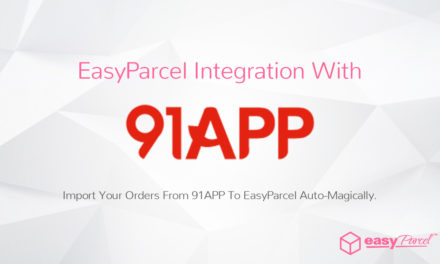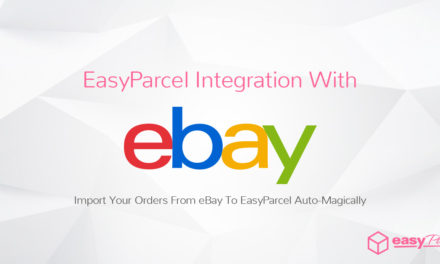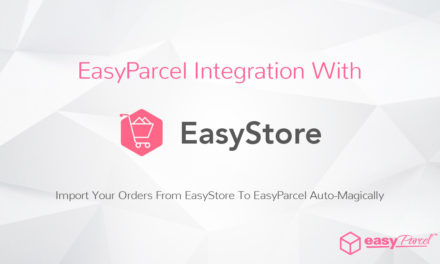Hey guys! We know that it’s been 16 months ever since the Malaysian government announced about the implementation of the Goods & Services Tax (GST) and you fear it, as if it’s a ghost that will haunt away your business.
Well, have no fear, as we at EasyParcel will be answering some common questions about who, what and how on claiming back Input Tax from GST business expenses. There are many questions along the way, so hang on!
1. Can any person claim back input credit from GST expenses?
Well, first of all, a person has to be making a supply (or products and services) that is tradable, according to the GST’s list of supplies. After that, there are multiple criteria that has to be fulfilled by the person and the supplies, such as:-
(a) Input tax has been incurred on business expenses;
(b) Input tax is allowable;
(c)The person is taxable, i.e. a person who is or is liable to be registered under the GST
(d) Goods or services acquired in the course of business or growth of it
(e) Goods or services made in Malaysia or any supply made outside Malaysia, which would be a taxable supply if made in Malaysia.
2. Alright. I have all those conditions for my business. Is there anything I need to know?
Now hold on before you start claiming everything in your business for your GST accounts! First of all, input tax incurred can ONLY be claimed if the goods or services are acquired for business purposes.
Most of the time, there will be situations where suppliers acquire goods and services which may be used for both business and non-business purposes.
3. Well, what kinds of supplies count towards input tax rebates?
For supplies, only those which are subject to a positive tax-rate can be claimed for GST. Expenses towards products like sales of commercial properties, medical equipment, textiles and furniture. Of course, there are many other things that are in there, which you can refer over at the official site.
4. I’m working over at a government agency. Is my agency able to claim its expenses on the GST?
Unfortunately, no; there are certain suppliers that cannot claim input taxes, such as:-
a) A non-registered person making taxable supplies (your business was not registered under the GST)
b) A person making an exempt supply (supplies that have been specially excluded from the GST; examples like residential properties, land for agriculture and land for general usage.
c) A person making an out of scope supply (supplies that are not included into the GST. Examples range from non-business supplies, things made outside of Malaysia, government supplies (except a certain few) and so on
5. Wow, that’s a lot of people who can’t claim back from the GST then! Well, is everything we spend for our business claimable for the GST?
For taxable people, there are certain expenses, in which a business cannot claim for GST. These include:-
a) The supply or importation of a passenger motor car
b) The hiring of a passenger motor car
c) Club subscription fees
d) Medical and personal accident insurance premiums or takaful contributions
e) Medical expenses
f) Family benefits
g) Entertainment expenses to a person other than employees or existing customers EXCEPT entertainment expenses incurred by a person who is in the business of providing entertainment
6. Oh no! Does this include my investments and bank savings? I think I need to send my money to an offshore bank account!
Well, no fears on that part. Things like bank deposits, currency exchanges, bonds, investments and the like are unaffected, as those are counted under a supply known as the ‘Incidental Exempt Financial Supplies’.
Of course, this doesn’t apply to people in financial institutions that carry on businesses of making exempt financial services, like banks, moneylenders, investors and the like.
7. Are there any sorts of strange rules that are in the GST’s terms and conditions?
Well, funny you should ask that. In the GST terms, there is a special rule about exempt supplies. That rule’s name is the ‘De Minimis’ rule. If your business is making a limited amount of exempt supplies, you are capable of claiming that under the Input Tax. Two criteria must be met for this to happen. They are:
– The total exempt supplies that are made must have an average of RM 5000 per month
– The amount is lower or equal to 5% of the total value of taxable and exempt supplies made during that month.
If both criteria aren’t fulfilled, a partial exemption is needed to be used to calculate the input tax.
8. I don’t meet both criteria! What is partial exemption and how does it work?
Well, partial exemption is a situation where a mixed supplier (a supplier who provides both taxable and exempt supplies to consumers) has to calculate how much residual input claim from both the taxable and exempt supplies.
9. Wait, what? What is this residual input tax you talk about?
Oh, I’m sorry for not explaining it. Residual input tax is input tax that is not directly attributed to either the taxable or exempt supplies. Examples of it are input taxes on rentals, utilities, stationary, computers and maintenance services. Of course, the amount of residual input tax that can be claimed is only proportional to the amount attributable to the taxable supply.
That proportion is determined according to the ratio of taxable supply to total supplies made by a taxable person. Though, the disposal of assets, supplies made by the taxable person to themselves, imported services and incidental exempt financial services do not count into the total supplies made.
10. Uh huh. So, back to the partial exemption?
Yes, yes. As we mentioned earlier, if your business made an average of RM 5000 a month and is 5% of the value of total supplies made, then you can claim it under the ‘De Minimis’ rule. Without those criteria, the partial exemption method is used.
11. Over the years, my assets are becoming cheaper and cheaper. Do I have to adjust the GST accounts with their market price?
Well, there is that. For assets which are worth more than RM 100,000, Capital Goods Adjustment must occur in order to gauge how much input tax credit can be claimed over multiple intervals for GST levied on it.
Trust us, this adjustment thing is really confusing and we recommend you to head on over to the official site to see how calculations for adjustments happen
12. Alright, I think I’ve had enough questions about what can be redeemed. At this rate, I think my grandmother’s cat’s pet toy can be taxed! Can you tell me where I could refer to all the official details?
Well, the website for the GST is located at the Royal Malaysian Customs site, whilst the document about the Input Tax details are over at this specific page and the guide about what supplies belong in which category are over at this page.
13. Alright, alright. Now that I know what needs to be claimed, how do I even claim it back?
As we mentioned earlier, any GST cannot be claimed on goods and services which are not used for business purposes (or apportioned, if you are a mixed supplier). To even begin claiming your input tax, you would need to be a registered person that holds these invoices:
a. Simplified tax invoice (for claims below RM500)
b. Full tax invoice (for claims above RM500); the tax invoice has to be issued with the registered person’s name, along with the GST amount charged
Finally, to claim your input tax, just fill in the details of your business expenses in the GST-03 return form; of course, the claim must be made during the taxable period in which the supply/ importation takes place.
14. Oh, thank goodness that was over! I think I need a cup of coffee right now. Can I contact you in the future to know more about GST on EasyParcel?
You can search for us over at our website, or you can get our attention over at our contact page. Oh yeah, that coffee you’re going to get, that’s not counted for in your input tax redemptions.
The guide below is from the Royal Malaysian Customs Department and is a crucial source to get more information about claiming back expenses from the GST.





![GST Input Tax Discussions [Summarized Info Sharing]](https://oldblog.easyparcel.my/wp-content/uploads/2015/03/1200x627-gst-input21.png)






